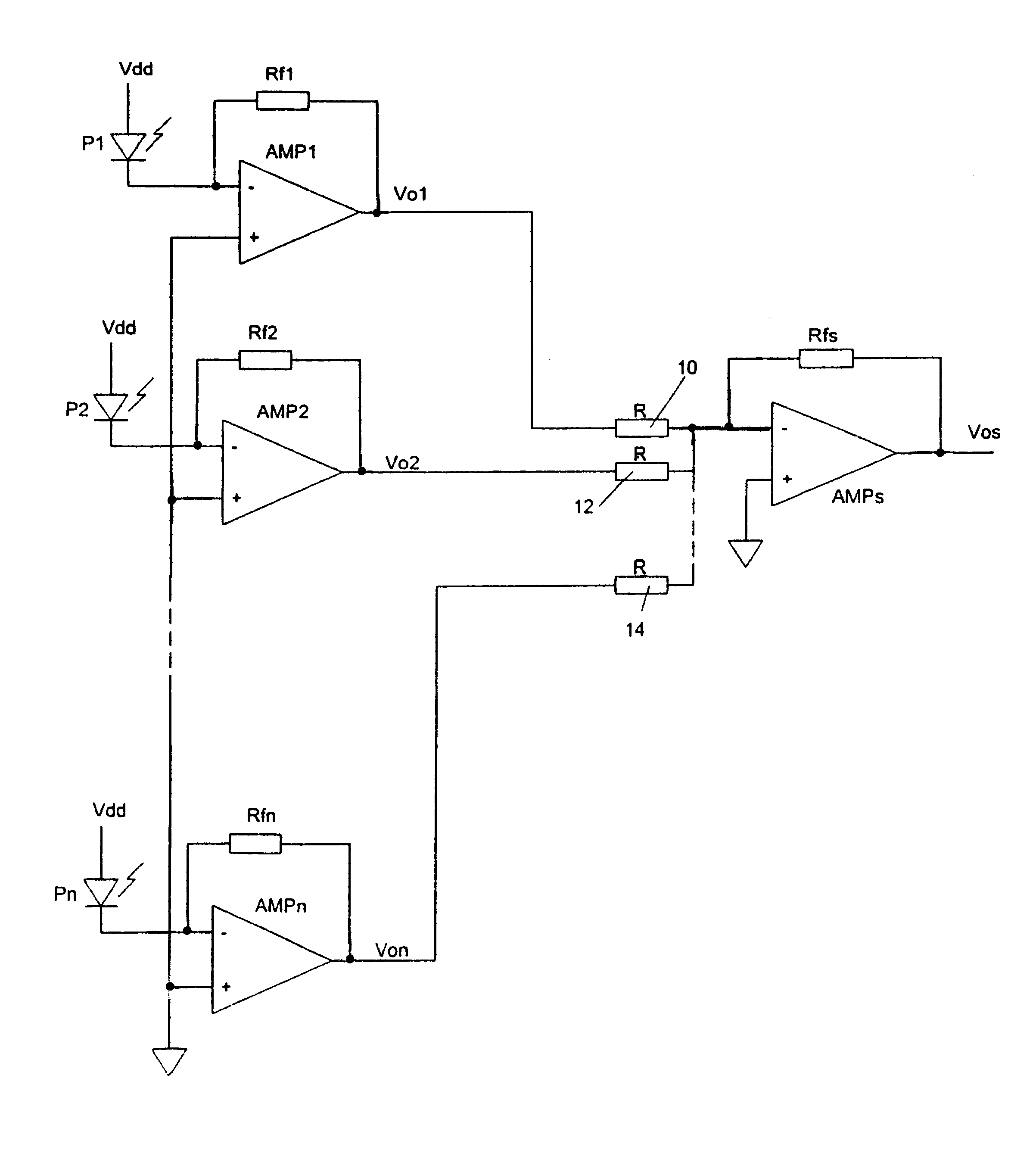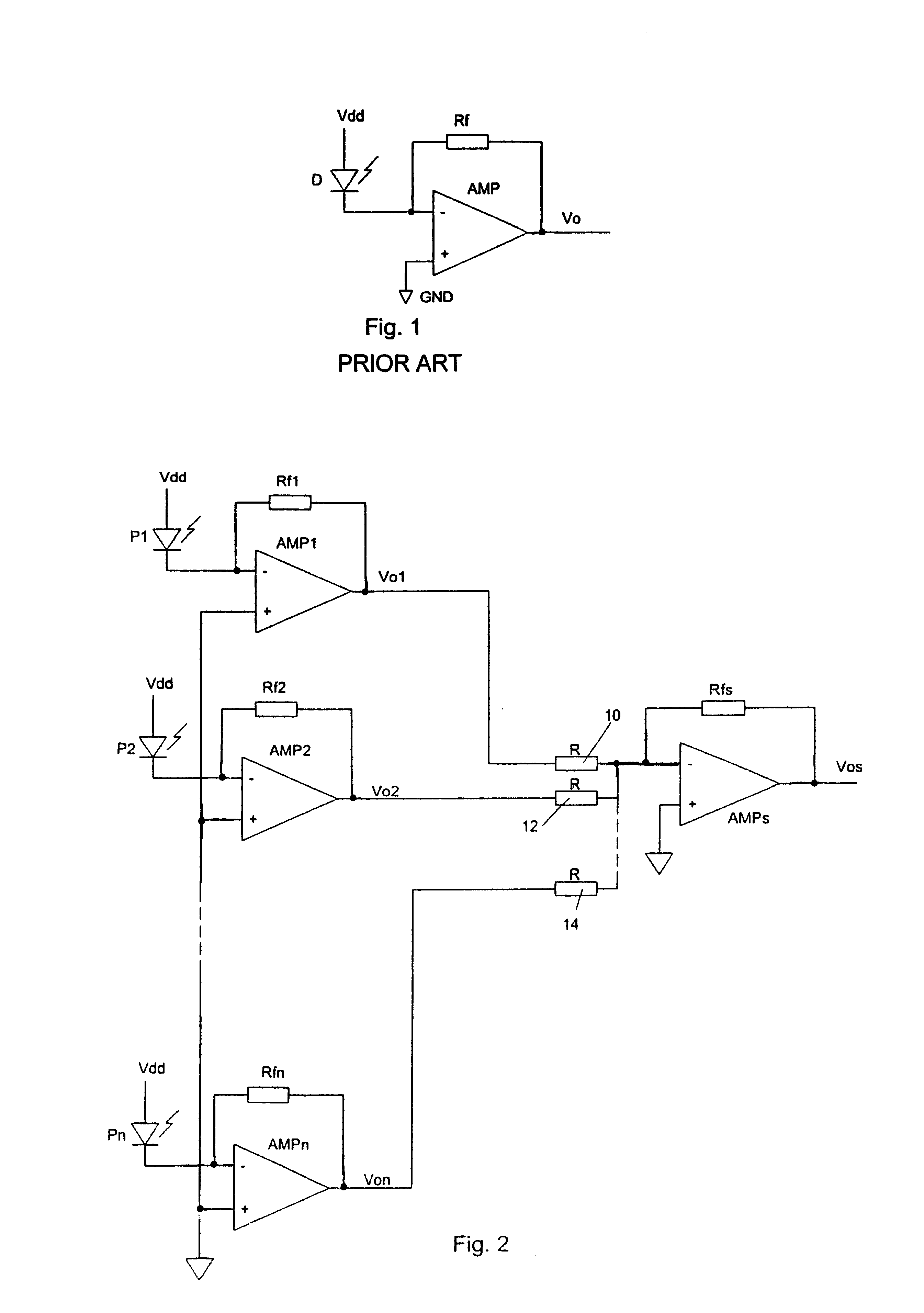Parallel opto-electric structure for high sensitivity and wide bandwidth optical transceiver
a transceiver and optical transceiver technology, applied in the field of optical transceivers, can solve the problems of parasitic capacitance of pin diodes, difficult to achieve high sensitivity and wide bandwidth in a single large area pin diodes, and suffer from conventional ir receivers
- Summary
- Abstract
- Description
- Claims
- Application Information
AI Technical Summary
Benefits of technology
Problems solved by technology
Method used
Image
Examples
Embodiment Construction
FIG. 2 illustrates a preferred embodiment of an optical receiver circuit according to the invention.
In FIG. 2, a plurality of photodiodes (e.g., in the preferred embodiment PIN diodes P.sub.1, P.sub.2 . . . P.sub.N) have their anodes connected to a voltage supply V.sub.dd to supply a bias voltage across the diodes P.sub.1, P.sub.2 . . . P.sub.N. The cathode of a first PIN diode P.sub.1 is connected to the inverting input of a first element transimpedance amplifier (unreferenced), including an operational amplifier AMP.sub.1 having a resistance element such as feedback resistor R.sub.1 with a resistance R.sub.f1 connecting the output of the operational amplifier AMP.sub.1 to the inverting input of the operational amplifier AMP.sub.1.
Similarly, the cathode of a second PIN diode P.sub.2 is connected to the inverting input of a second element transimpedance amplifier (unreferenced) including an operational amplifier AMP.sub.2 having a feedback resistor R.sub.2 with a resistance R.sub.f2...
PUM
 Login to View More
Login to View More Abstract
Description
Claims
Application Information
 Login to View More
Login to View More - R&D
- Intellectual Property
- Life Sciences
- Materials
- Tech Scout
- Unparalleled Data Quality
- Higher Quality Content
- 60% Fewer Hallucinations
Browse by: Latest US Patents, China's latest patents, Technical Efficacy Thesaurus, Application Domain, Technology Topic, Popular Technical Reports.
© 2025 PatSnap. All rights reserved.Legal|Privacy policy|Modern Slavery Act Transparency Statement|Sitemap|About US| Contact US: help@patsnap.com



